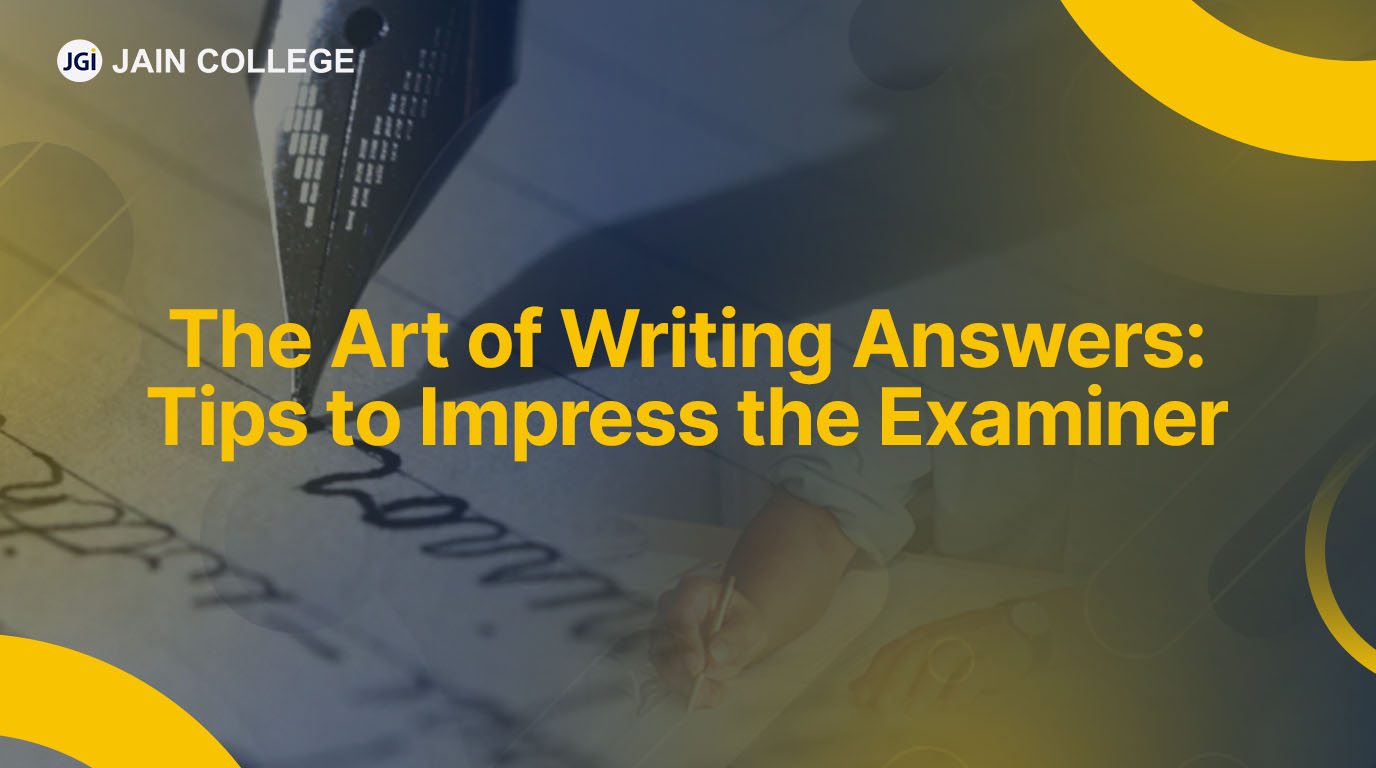
1. Understand the criteria for paper correction
2. Build a strong structure for your answer
3. Focus on sentence construction and the answer flow
4. Use bullets, diagrams and graphs
Techniques for improving one’s writing skills for exams
Highlight important words and phrases
A strong introduction and conclusion
Time management in framing responses
Preparing for exams can be overwhelming, especially when there is a vast syllabus to cover. Although it is important to understand the concepts, students end up or, are compelled to memorise and write the answers verbatim. While this may be good when you are trying to stress a point or you are quoting a theory, it is important to show how well you have understood what you have read, if you can explain it cohesively, and demonstrate the application of the knowledge. Many students lose out on the critical scores simply because of their lack of good writing. Through this blog, we will learn more about the art of writing and how you can impress the examiner.
Examiners check answers based on set criteria such as:
The basic structure of an answer that you can adhere to is –
The answer’s length should be as per the marks assigned to it. The answer’s flow must show a logical progression and stick to the theme. Try to insert your perspective if there is scope for it to show your understanding.
With the long answers, before you start writing, create an outline with the main points that you want to cover in a cohesive sequence. Once you have the keywords and phrases, you can build on the ideas with the introduction, body and conclusion. Be mindful of the time as you are organising the answer structure in your mind as you will have a few minutes to tackle each answer.
You can enhance your answer quality by presenting it in point form and integrating diagrams and data. With languages, you can’t use points but avoid being too descriptive as you may overshoot the answer length and meander away from the point. You can use techniques like creating a mind map to structure the answer and stay on point while building your answer.
While revising the subject, write answers and practice to improve your speed and answer structure. The more you write, the better your sentence structure will become as you will be better prepared to organise your thoughts. Also, writing regularly will improve your handwriting and make your work legible.
Underline the keywords or important phrases so that in one glance the examiner knows that you have covered all the important points that they are looking for in the response.
Start strong in the introduction, with a direct response in the introduction. The conclusion must present a summary of the answer.
In the exam hall, time is not a luxury. As soon as you get the paper, first, see what the long answer questions are and choose the elective questions so that you are mentally prepared to answer them. Even as you answer a question, if you are unsure what to write or want to write more than the time you can allocate for it, leave that answer and move on to the next questions. Return to the question once you have completed the paper.
If there is no negative marking, then attempt all questions, even where you have optional questions. The examiners correct all the answers, and they give the student the benefit of adding the highest score to the total.
The difference between a top scorer and someone who scores average marks is the presentation of the paper. The way they articulate their response and meet the examiners' expectations sets them apart. Make it a regular practice to write answers while revising rather than write answers for the first time during the exams. This will help you learn better and be a better writer too.

JAIN PU College, a part of the renowned JGI Group, is committed to empowering students with quality education.
Beyond academics, the college ensures its online content reflects the same standard of excellence. Every blog and article is meticulously vetted and proofread by subject matter experts to ensure accuracy, relevance, and clarity. From insightful educational topics to engaging discussions, JAIN PU College's content is crafted to inform, inspire, and add value to its readers, reflecting the institution's commitment to intellectual growth and innovation.
View all Blogs